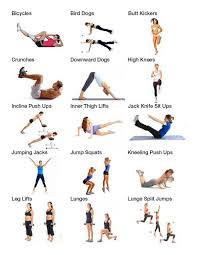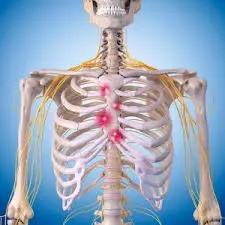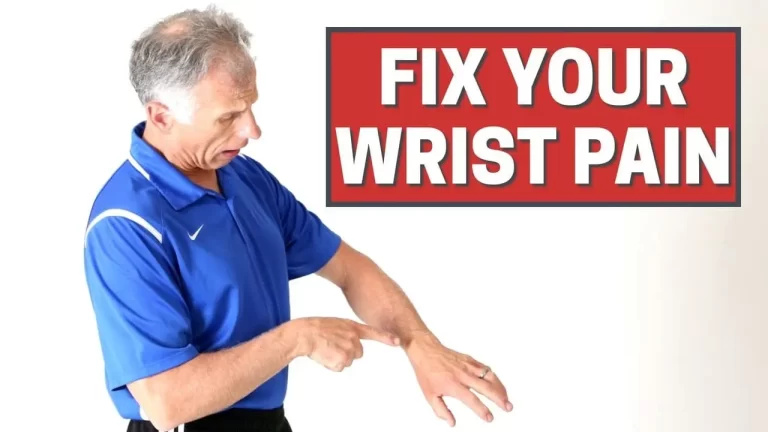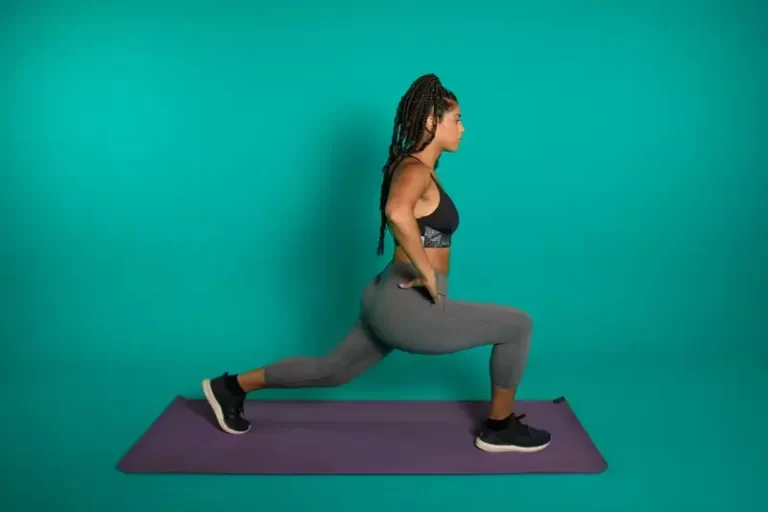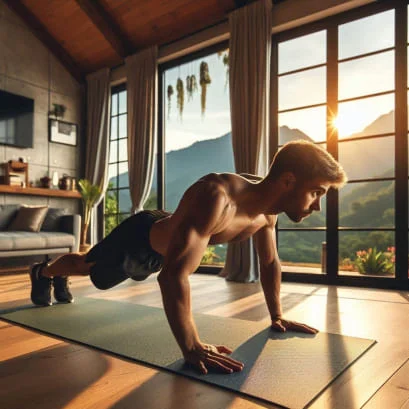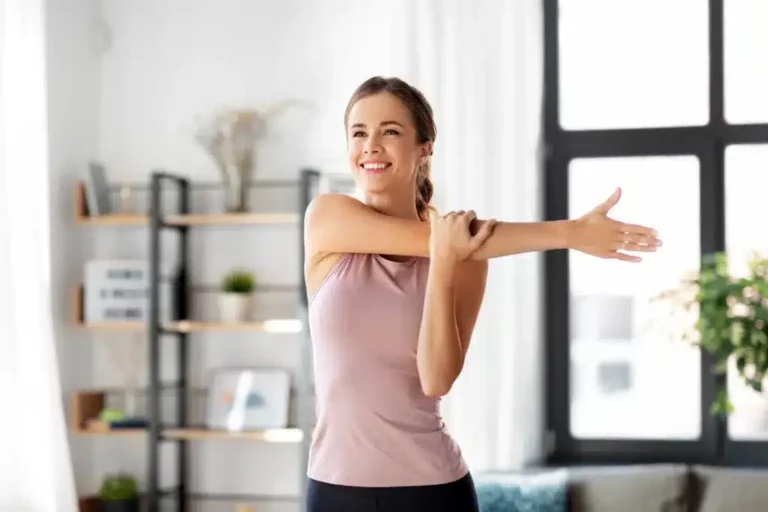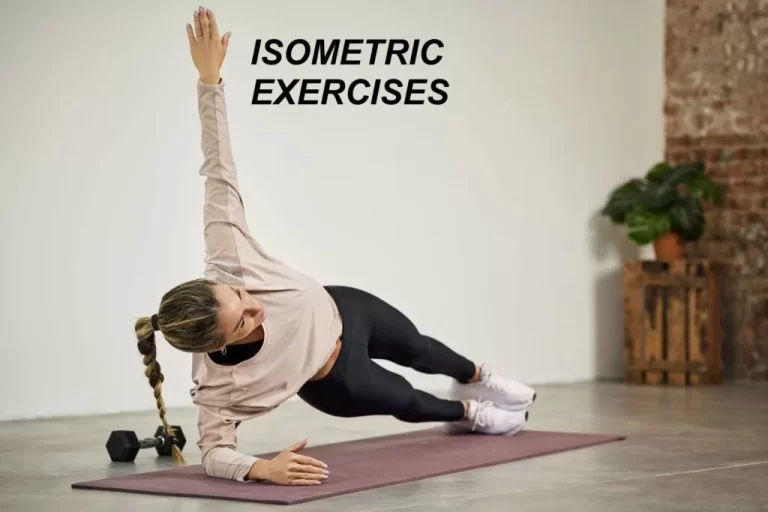20 Different Types of Exercise at Home
Introduction:
Exercising at home offers a convenient way to stay fit using minimal or no equipment. From strength training and cardio to flexibility and balance workouts, there are many types of exercises you can do in your own space to support overall health and wellness.
You may simply modify at-home workouts to meet your fitness level and goals, ranging from cardio and weight training to flexibility and balance exercises. These workouts promote a regular training regimen at home, increase energy levels, and enhance general health with little to no equipment.
20 Different Types of Exercise at Home:
Jumping Jacks:
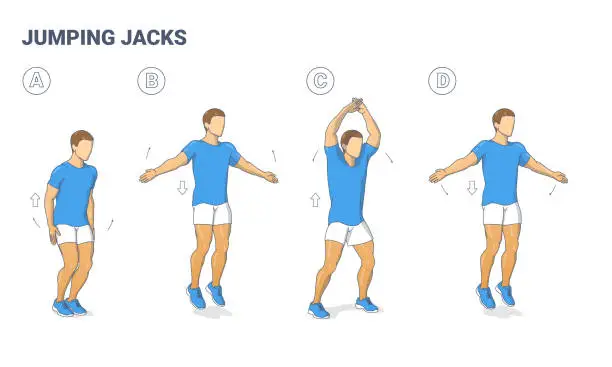
A traditional full-body aerobic workout that raises heart rate, burns calories, and improves coordination is the jumping jack. This easy exercise consists of leaping to a posture where the arms are elevated aloft and the legs are spread wide, then landing back with the feet together and the arms at the sides.
Jumping jacks are an excellent way to begin any workout since they rapidly warm up the body. They also enhance cardiovascular health and endurance while strengthening the shoulders, legs, and core.
Lunges:
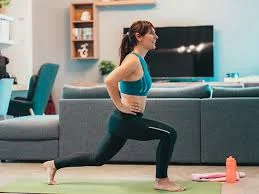
Lunges strengthen the legs and buttocks while enhancing balance, coordination, and core stability. They can be done with or without weights and in a variety of forms, including walking lunges, forward lunges, and reverse lunges. You can tone your muscles and increase the overall mobility of your lower body by doing lunges.
Squats:
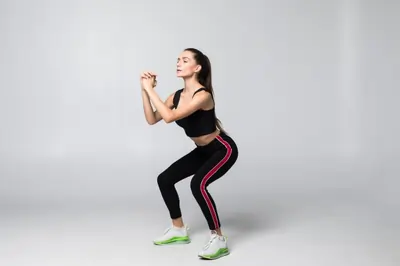
This motion includes lowering the hips and bending the knees as though seated in a chair, then raising oneself back up. In addition to strengthening the core and enhancing posture, squats mainly target the thighs, hips, and glutes.
They improve general mobility, balance, and flexibility. Squats may be performed without any special equipment anywhere, and they can be made more intense with variants like jump squats or sumo squats. Frequent squat exercise promotes stronger legs and more functional mobility in day-to-day activities.
Burpees:
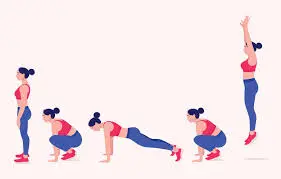
This intense workout raises heart rate and burns calories rapidly while targeting a variety of muscle areas, such as the arms, legs, core, glutes, and chest. Burpees are a popular option for at-home exercises and fat-burning regimens since they increase coordination, strength, and endurance.
Push-Ups:
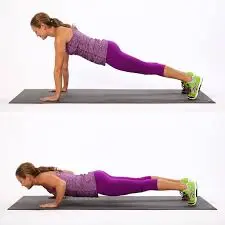
A traditional upper-body strength exercise, push-ups focus on the muscles of the chest, shoulders, triceps, and core. Push-ups, which involve lowering and lifting the body with the arms while maintaining a straight body, are a good way to increase endurance and muscular mass.
They can be adjusted to accommodate any level of fitness and don’t require any special equipment. For example, novices may do knee push-ups, while more experienced ones can be done on an incline. Push-ups are a mainstay of at-home training regimens because they help build upper body strength, boost posture, and improve general fitness.
Mountain Climbers:
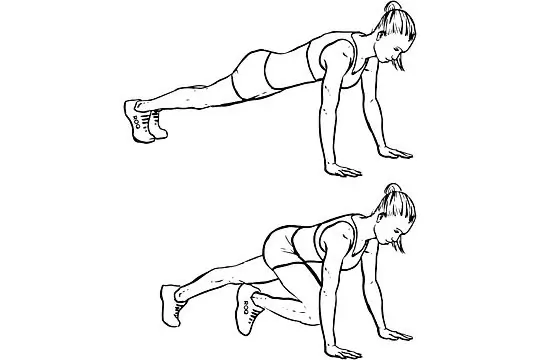
An active full-body workout that combines strength and cardio is the mountain climber. The exercise, which is done in a plank posture, simulates sprinting by rapidly switching the knees toward the chest.
To effectively burn calories, this workout raises the heart rate while targeting the arms, legs, shoulders, and core. They don’t require any equipment and are perfect for at-home exercises, particularly for people who want to tone their entire body and increase their metabolism quickly.
Russian Twists:
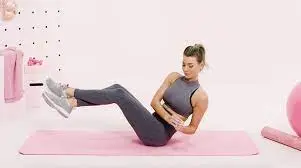
An excellent core-strengthening exercise that works the obliques and abdominal muscles is the Russian twist. This exercise, which is done while seated with the knees bent and the feet slightly raised off the floor, includes rotating the body from side to side while holding the hands together or with a weight.
Russian twists are an excellent complement to any at-home exercise program, particularly when it comes to strengthening the muscles surrounding the spine and defining the waist for improved posture and body control.
Planks:
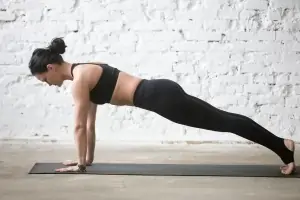
They are performed by maintaining a straight body position while resting on the forearms or hands, or toes. This isometric workout increases general endurance, lowers the risk of back injury, and improves posture.
Planks are simple to perform at home and don’t require any special equipment. To make them more challenging, try side planks or plank leg lifts. Regularly holding a plank aids in building a healthy and powerful core.
Overhead dumbbell presses:
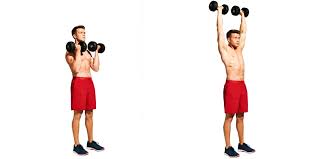
This exercise helps strengthen the shoulders, correct posture, and increase upper-body stability. It is performed by holding a dumbbell at shoulder height in each hand and pressing it upward until the arms are completely extended.
Depending on your degree of balance and fitness, you can perform it standing or sitting. When you have dumbbells and want to efficiently tone and build your upper body, overhead presses are the perfect at-home exercise.
Dumbbell rows:

For extra stability, this exercise also works the core and biceps. Dumbbell rows, which are executed by bending at the hips with a straight back and drawing a dumbbell up toward the waist, help to strengthen the back, improve posture, and define the muscles in the upper body. They are a flexible and efficient complement to any at-home exercise regimen since they may be performed with one arm at a time or both arms at once.
Single-leg deadlifts:
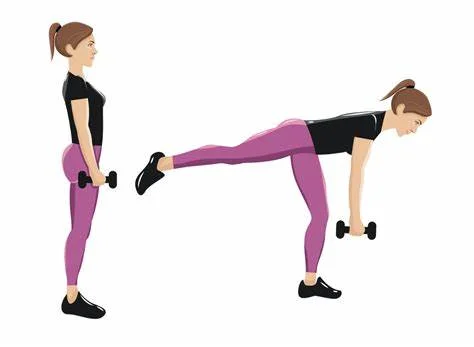
A difficult strength and balance exercise that works the hamstrings, glutes, lower back, and core is the single-leg deadlift. This exercise, which involves standing on one leg and extending the second leg behind you while hinging at the hips, calls for control and stability as you drop your upper body and reach for a weight or the floor. It may be performed at home with or without dumbbells and is particularly helpful for resolving muscular imbalances.
Side planks:
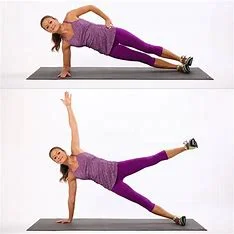
A core-strengthening exercise, side planks mostly work the obliques, but they also work the shoulders, hips, and legs. Side planks enhance posture, core endurance, and spinal alignment. With variants like leg lifts or hip dips to add intensity, they are simple to perform at home and don’t require any special equipment. A strong and balanced core may be developed with regular side plank practice.
Glute bridge:
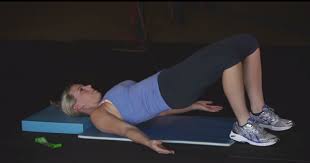
A great lower-body exercise that works the glutes, hamstrings, and lower back is the glute bridge. Then, you bring yourself back down. This exercise promotes improved posture, increases hip mobility, and strengthens the posterior chain.
It is particularly helpful in lessening lower back pain caused by extended sitting. With variations like single-leg or weighted bridges for extra difficulty, glute bridges are an ideal at-home workout that doesn’t require any special equipment.
Shoulder Taps:
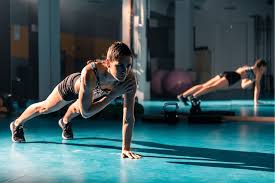
The main muscles worked by the bodyweight exercise known as “shoulder taps” are the shoulders, core, and stability muscles. The exercise, which is done from a high plank posture, includes raising one hand to touch the opposing shoulder while maintaining the most stable body possible. Shoulder taps are a great complement to warm-up exercises or at-home workouts because, despite their simplicity, they are quite effective in improving control and coordination.
Wall Sits:
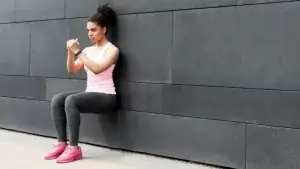
A straightforward but difficult isometric exercise, wall sits focus on the muscles in the lower body, particularly the quadriceps, hamstrings, and glutes. Because of their efficiency and simplicity of usage without the need for equipment, they are frequently utilized in strength training, physical therapy, and athletic conditioning.
Superman:
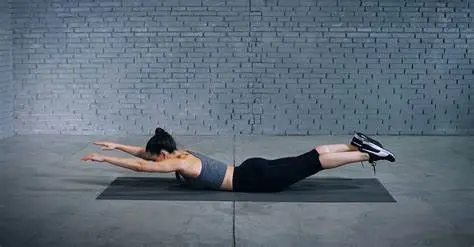
Superman is a bodyweight workout that targets the shoulders, hamstrings, glutes, and lower back. You maintain the pose for a short time before lowering yourself back down. By focusing on the posterior chain, or the muscles around the back of the body, the Superman exercise helps to improve posture, core stability, and spinal support. Because it prevents slouching and improves back health without the need for any extra equipment, it is especially helpful for people who spend a lot of time sitting down.
Leg Raises:

A great core workout that focuses mostly on the lower abdominal muscles is the leg raise. This exercise involves extending both legs while lying flat on your back. Slowly raise both legs to a 90-degree angle, then bring them back down without letting them contact the floor.
This deliberate movement strengthens the abs, activates the core, and increases stability in the lower body. They are a simple option for at-home exercises and stomach training regimens because they don’t require any special equipment.
Calf raises:
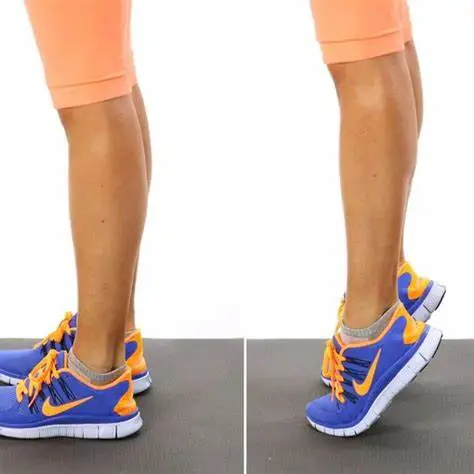
A straightforward yet effective lower-leg exercise, calf raises focus on the gastrocnemius and soleus muscles. This exercise involves standing erect, slowly raising your heels off the floor to stand on the balls of your feet, and then carefully lowering them back down.
Ankle stability, balance, and calves are all improved by this up-and-down movement. Anybody who wants to increase lower-leg power and endurance, including athletes and runners, may benefit greatly from calf raises, which can be performed anywhere and with or without weights.
Bird Dog:
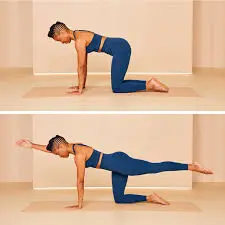
The lower back, shoulders, glutes, and abdominals are all strengthened with the core and stability exercise known as “bird dog.” Starting on all fours (hands and knees on the floor), you simultaneously stretch one arm forward and the opposing leg backward while maintaining a flat back and an engaged core.
You repeat on the opposite side after returning to the beginning position, after holding for a few seconds. Bird Dog is particularly good for spine health and injury prevention since it enhances posture, balance, and coordination.
Cobra pose:
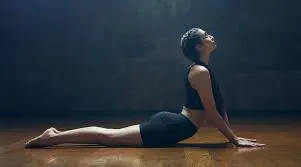
Bhujangasana, or cobra pose, is a well-liked yoga practice that helps to open up the chest, strengthen the spine, and enhance posture. With your hands behind your shoulders, you may gradually raise your chest while maintaining your lower body grounded in this posture, which involves lying on your stomach.
This exercise stretches the muscles in the chest, belly, and lower back by producing a mild backbend. Regular cobra position practice helps improve circulation, flexibility, and back problems. By encouraging deep breathing and expanding the heart and lungs, it also helps to lessen tension and exhaustion. Those who have back stiffness or spend a lot of time sitting down will find cobra posture extremely helpful.
Conclusion:
You may create a well-rounded fitness regimen without going to the gym by including several forms of exercise at home, such as cardio, weight training, core exercises, balancing exercises, and flexibility exercises.
These workouts, which range from planks and shoulder taps to squats and push-ups, target different muscle areas and enhance your general health. Strength, endurance, mobility, and mental health are all improved by consistently performing a variety of these exercises. You may comfortably reach your fitness objectives from the comfort of your own home if you have a little room and are consistent.
FAQs
In five points, what does exercise mean?
A healthy weight, digestive system regulation, the development and maintenance of healthy bone density, muscle strength, and joint mobility, as well as the promotion of physiological well-being, the reduction of surgical risks, and strengthening are all benefits of physical exercise.
Does walking count as exercise?
Walking is unquestionably a workout activity. Including walking in your routine, whether it be power walking or strolling, may help you control your weight, increase your muscular strength, and enhance your cardiovascular fitness.
Which workouts should I perform every day?
Exercises that include cardio, weight training, balance, and flexibility should be a part of any well-rounded daily regimen.
In terms of exercise, what does 20 mean?
The workout is known as the 20:20 since there are 20 movements with 20 repetitions each. It should take less than 20 minutes, even if it can seem like a lot.
References:
- Davis, N. (2025, May 1). 30 moves to make the most of your At-Home workout. Healthline. https://www.healthline.com/health/fitness-exercise/at-home-workouts
- Neudecker, K. (2025, February 14). 45 of the Best Exercises to Boost Your Home Workout Gains. Men’s Health. https://www.menshealth.com/uk/building-muscle/a754099/the-15-best-beginners-exercises-to-do-at-home/
- Crna, R. N. M. (2025b, April 17). 20 cardio exercises to do at home with minimal equipment, from beginner to advanced. https://www.medicalnewstoday.com/articles/cardio-exercises-at-home
- Village Gym. (2024, February 12). Getting started on your fitness path: 20 different types of exercises for beginners. Village Gym. https://www.villagegym.co.uk/blog/getting-started-on-your-fitness-path-20-different-types-of-exercises-for-beginners/
- Top 25 At-Home Exercises. (2016, May 17). https://www.acefitness.org/resources/everyone/blog/6593/top-25-at-home-exercises/?srsltid=AfmBOooc3dHK7oxyHZ2XqtIyJT6klbb4mEmV-Hp1hRRT9p62xhyQziMe

